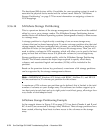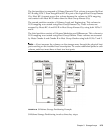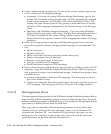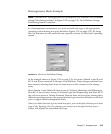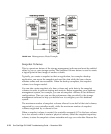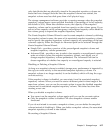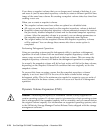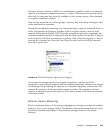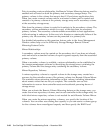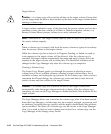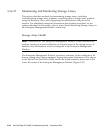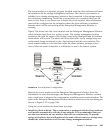
3-80 Sun StorEdge 5310 NAS Troubleshooting Guide • December 2004
Prior to creating a mirror relationship, the Remote Volume Mirroring feature must be
enabled and activated on both the primary and secondary storage arrays. The
primary volume is the volume that accepts host I/O and stores application data.
When you create a remote volume mirror, a mirrored volume pair is created and
consists of a primary volume at the primary storage array and a secondary volume
at the secondary storage array.
Data from the primary volume is copied in its entirety to the secondary volume. The
secondary volume maintains a mirror (or copy) of the data from its associated
primary volume. The secondary volume remains unavailable to host applications
while mirroring is underway. In the event of a disaster or catastrophic failure of the
primary site, the secondary volume can be promoted to a primary role.
For detailed information on this premium feature, refer to the Array Management
Window online help or to the SANtricity Storage Manager Remote Volume
Mirroring Feature Guide.
Mirror Relationships
A secondary volume must be created on the secondary site if one does not already
exist and must be a standard volume of equal or greater capacity than the associated
primary volume.
When a secondary volume is available, a mirror relationship can be established in
the storage management software by identifying the storage array containing the
primary volume and the storage array containing the secondary volume.
Mirror Repository Volumes
A mirror repository volume is a special volume in the storage array created as a
resource for the controller owner of the primary volume in a Remote Volume Mirror.
The controller stores mirroring information on this volume, including information
about remote writes that are not yet complete. The controller can use this
information to recover from controller resets and accidental powering-down of
storage arrays.
When you activate the Remote Volume Mirroring feature on the storage array, you
create two mirror repository volumes, one for each controller in the storage array. An
individual mirror repository volume is not needed for each Remote Volume Mirror.
When you create the mirror repository volumes, you specify the location of the
volumes. You can either use existing free capacity or you can create a volume group
for the volumes from unconfigured capacity and then specify the RAID level.



